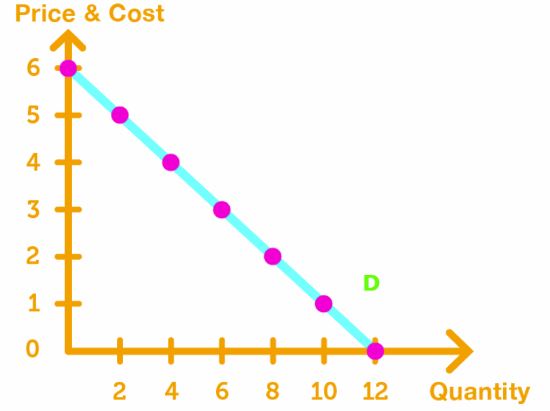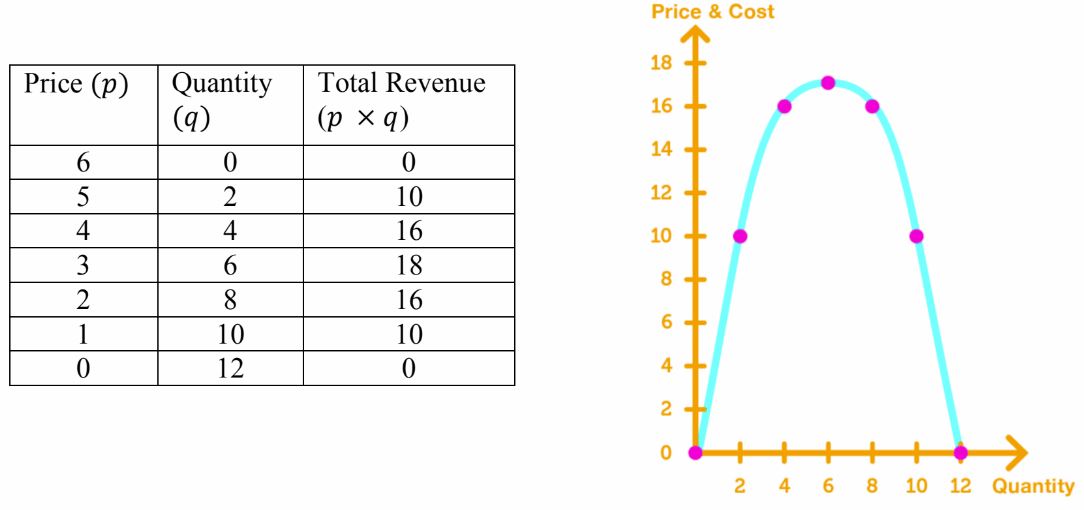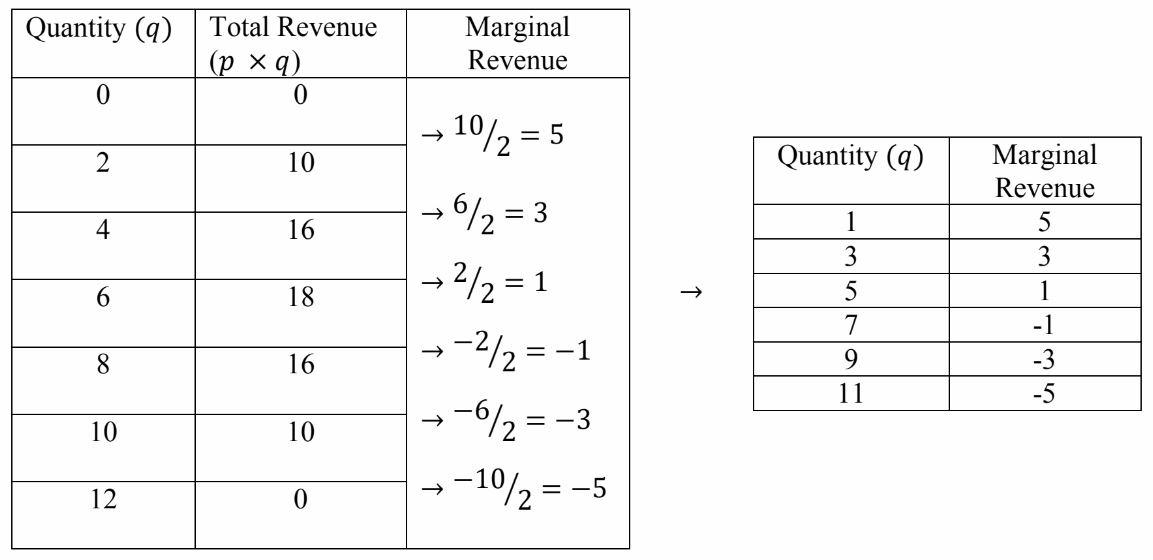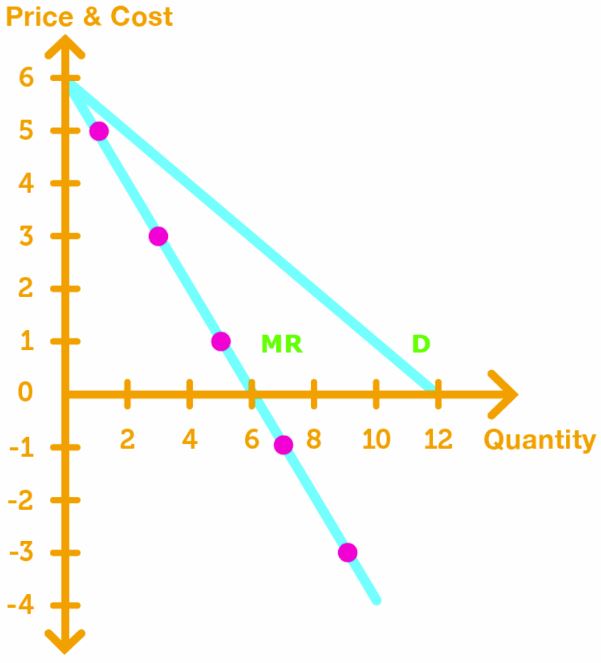Since there is only one firm in a monopoly, the demand curve for the single firm is the market demand.

Using the demand curve, we can calculate the total revenue curve.
Total Revenue: is the price multiplied by the quantity sold.

Note: The total revenue curve is a quadratic function.
Marginal Revenue & Demand Curve
Using the total revenue, we can also find and graph the marginal revenue curve for single-price monopoly.
To calculate marginal revenue, we use the formula:

Plotting the points with the demand curve together gives us the following graph:

Note: The MR curve can also be derived algebraically by multiplying the coefficient of the demand curve by 2.
Elasticity & Marginal Revenue
Marginal revenue is related to the elasticity of demand.

- If demand is elastic, then 1% price cut increases the quantity sold by more than 1%. This causes marginal revenue is positive, and revenue will increase.
- If demand is inelastic, then 1% price cut increases the quantity sold by less than 1%. This causes marginal revenue is negative, and revenue will decrease.
- If demand is unit elastic, then 1% price cut increase the quantity sold by 1%. This does not change the revenue.
Note: In a monopoly, the demand will always be elastic. The firm will never produce a huge quantity to sell at a low price. Instead, they would increase their price, and sell less quantities to increase profit.






